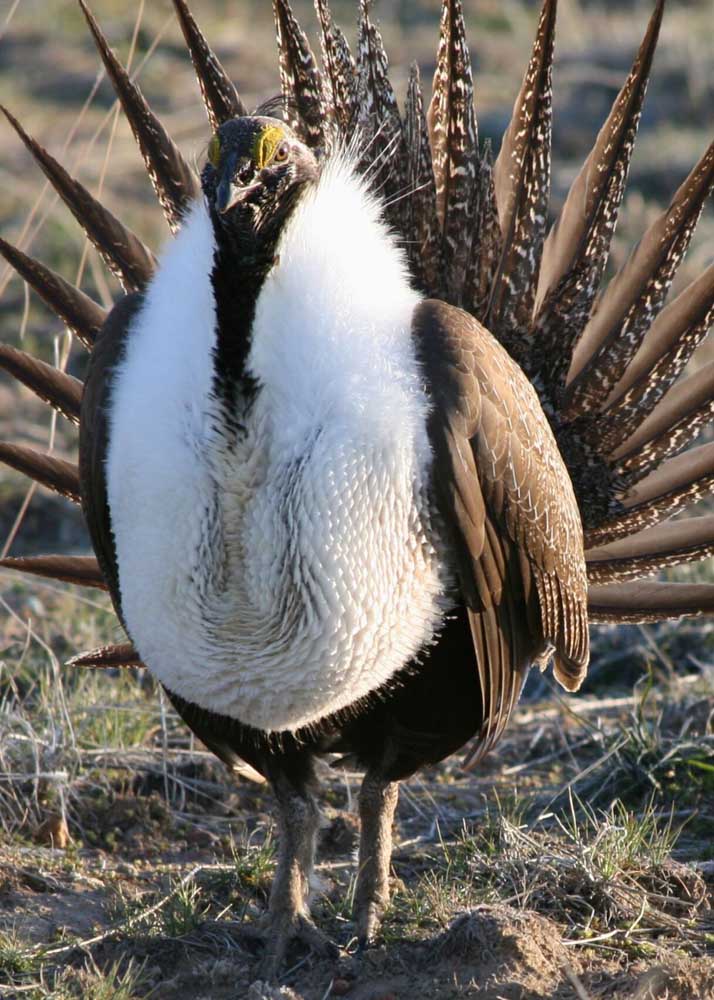Federal funding of $3.5 million will help improve sage grouse habitat
Published 1:00 pm Tuesday, December 10, 2024

- A male sage grouse inflates the air sacs in its breast and fans its tail feathers as part of the bird’s elaborate spring courting ritual.
The Crook County Soil and Water Conservation District has been awarded a $3.5 million federal grant to enhance core sagebrush ecosystems in Oregon. The restoration effort is planned to benefit sage grouse, pronghorn and other wildlife species in the High Desert.
The grant is part of a $122.4 million funding effort from the National Fish and Wildlife Foundation to support conservation projects nationwide.
The soil and water conservation district is managing the grant on behalf of a collaborative group that includes the U.S. Fish and Wildlife Service, the Bureau of Land Management and the Oregon Department of Fish and Wildlife.
The grant will improve thousands of acres of sage grouse habitat 70 miles east of Bend, and north of U.S. Highway 20 near Hampton Buttes. The focus area straddles both Crook and Deschutes counties.
Treatment efforts
A focus of the effort is cutting juniper trees to recreate habitat more suitable for sage grouse to breed and forage for food. Sage grouse breed in areas called leks, which tend to be scattered around the best habitat for nesting and foraging.
Funds will also be spent on applying herbicide to invasive grasses and the planting of local native seeds. Grazing infrastructure will be removed or improved and efforts will be made to improve grazing management to reduce its impacts on wildlife.
“Three and half million dollars is going to get a lot of work done,” said Andy Gallagher, district manager of the Crook County Soil and Water District.
Gallagher said juniper trees create multiple problems for sage grouse and the sagebrush habitat they occupy. Juniper trees use a lot of water, robbing moisture from other plants. They also create shade, which prevents the growth of grasses and plants that favor sunlight.
“Everything that we have here on the east side of the state relies on sunlight and most of our plants don’t do well shaded,” said Gallagher.
“So not only do they consume a lot of water, but they shade other plants. They change the structure of the habitat to where it’s no longer suitable for sage grouse or other sagebrush obligate species,” he said.
Sage grouse are also wary of trees and other high structures because their instincts tell them birds of prey perch in high locations.
“Vertical structures are something they have evolved to stay away from,” said Gallagher.
Heart of Oregon funding
In addition to the $3.5 million for improving sage grouse habitat, the National Fish and Wildlife Foundation also approved a $605,326 grant for Heart of Oregon Corps. The funds are intended to improve watershed health and reduce wildfire risk across the Deschutes Basin through conservation projects undertaken by youth groups.
Bend-based Heart of Oregon Corps will use the funds to treat 211 acres for fuel reduction and restore 12 miles of riparian habitat in the Deschutes National Forest, the Ochoco National Forest and the Crooked River National Grasslands.
A further 443 acres in the basin will be improved through general habitat restoration, including wetland and meadow improvements. Work in these areas usually encompasses hydrology improvements to increase the saturation of wet meadows, as well as the planting of native species and removal of invasive species.








